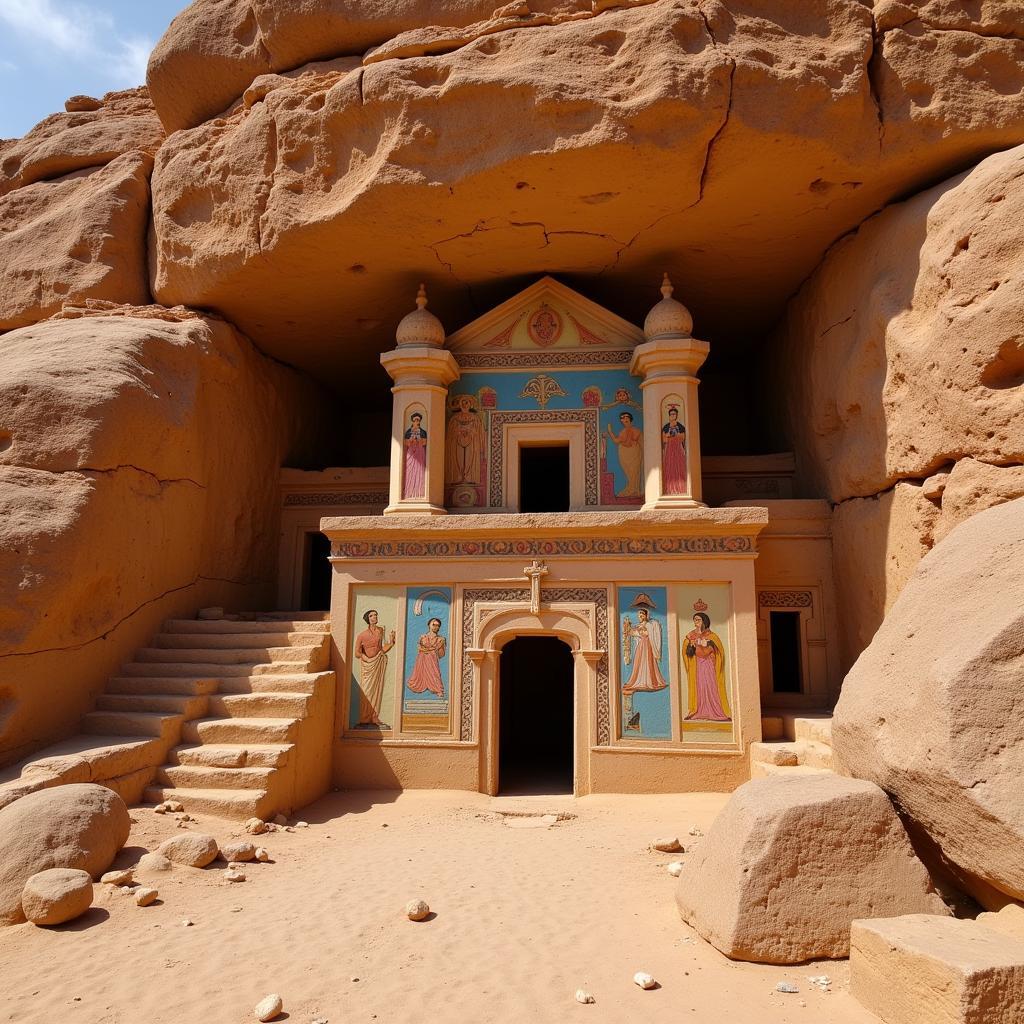Exploring African Architecture in the 9th Century
African architecture in the 9th century showcased a diverse range of styles and techniques, reflecting the continent’s rich cultural landscape and ingenuity. This period witnessed the flourishing of several prominent civilizations, each leaving its unique mark on the architectural heritage of Africa. From the monumental structures of ancient Nubia to the burgeoning settlements in West Africa, this era offers a fascinating glimpse into the architectural achievements of the past.
The Great Mosque of Samarra and its Influence
The 9th century saw the rise of Islam across North Africa, influencing architectural styles significantly. While not strictly within Africa’s geographical boundaries, the Great Mosque of Samarra in present-day Iraq, built in the 9th century, had a considerable impact on mosque architecture across the continent. Its spiral minaret, a unique architectural feature, inspired similar designs in North African mosques, showcasing the spread of architectural ideas across regions. The mosque’s massive scale and intricate brickwork also influenced the construction of religious structures across the continent. This period also saw the development of distinctive regional styles in mosque architecture, blending Islamic principles with local building traditions.
This era saw the rise of powerful empires like the Ghana Empire in West Africa, known for its thriving trade routes and sophisticated urban centers. Though specific architectural details from 9th-century Ghana are scarce, archaeological evidence suggests the use of mudbrick and timber in construction, reflecting adaptation to the local climate and available resources. The burgeoning trade networks also facilitated the exchange of architectural ideas and technologies, contributing to the development of unique regional styles. Did you know that during this period, trade flourished, leading to the development of important urban centers?
 Ghanaian Architecture in the 9th Century
Ghanaian Architecture in the 9th Century
Nubian Architecture: A Legacy of Stone
Further south, the Nubian kingdoms continued their long tradition of monumental stone architecture. The 9th century marked a period of transition for Nubian architecture, influenced by both Christian and Islamic traditions. Churches and monasteries, often carved directly into rock faces, featured intricate carvings and vibrant frescoes. These structures showcased the Nubians’ mastery of stonework and their unique artistic style. Nubian architecture served as a testament to the enduring legacy of this ancient civilization.
What were the defining features of Nubian architecture? Primarily, it involved the skillful use of stone, resulting in impressive monuments that have stood the test of time.
 Nubian Church Architecture in the 9th Century
Nubian Church Architecture in the 9th Century
Professor Amani Olumide, a renowned historian specializing in East African architecture, explains, “Nubian architecture stands as a powerful symbol of cultural resilience and artistic brilliance. Their rock-cut structures offer a unique window into the spiritual and social life of the 9th century.”
Early Settlements and Architectural Innovation in Southern Africa
While less documented, the 9th century also witnessed the development of early settlements in Southern Africa. Archaeological findings indicate the presence of various communities who employed diverse building techniques using locally available materials like thatch and timber. These early structures laid the groundwork for future architectural developments in the region. These communities demonstrated ingenuity in adapting to the diverse landscapes of Southern Africa, laying the foundation for later architectural traditions.
African country railway station and train provides a glimpse into a much later period of architectural development in Africa. While not directly related to the 9th century, it illustrates the ongoing evolution of African architecture. Similarly, although focused on a different aspect of culture, the African heroes in history page highlights the rich and complex history that shaped the architectural landscape.
 Early Settlements in Southern Africa
Early Settlements in Southern Africa
Dr. Fatima Mbaye, an expert in West African archaeology, states, “The 9th century represents a crucial period in the development of African architecture. The diverse styles and techniques reflect the ingenuity and adaptability of various communities across the continent.” The architectural innovations of this period, though often less documented than later eras, provide valuable insights into the rich cultural tapestry of ancient Africa.
Conclusion
African architecture in the 9th century was a dynamic and diverse field, reflecting the continent’s varied cultures and environments. From the monumental stone structures of Nubia to the burgeoning settlements in West Africa, this era witnessed remarkable architectural achievements. Further research and exploration are crucial to understanding the full scope of African architecture in the 9th century. For more information on South African history, you can explore the Dutch South African page. While not specifically related to architecture, it provides valuable context for the region’s cultural development. Also, the lighthearted African castles meme reminds us of the contemporary interest in African architecture. Understanding the architectural legacy of this period offers a valuable perspective on the continent’s rich history and cultural heritage. The rivalry between Mali vs Central African Republic showcases the diverse historical and cultural landscape of Africa, influencing the architectural styles of various regions.
FAQ
- What were the primary building materials used in 9th-century African architecture?
- Materials like mudbrick, timber, stone, and thatch were commonly used, depending on the region and available resources.
- How did Islam influence African architecture in the 9th century?
- The spread of Islam introduced new architectural styles, particularly in mosque construction, influencing design elements and building techniques.
- What are some notable examples of 9th-century African architecture?
- Nubian rock-cut churches and monasteries and the influence of the Great Mosque of Samarra on North African architecture are prominent examples.
- What were the characteristics of Nubian architecture in this period?
- Nubian architecture continued its tradition of monumental stone structures, often carved into rock faces, showcasing intricate carvings and frescoes.
- How did trade impact architectural development in 9th-century Africa?
- Trade facilitated the exchange of architectural ideas and technologies, contributing to the development of unique regional styles.
- What are some resources for further research on 9th-century African architecture?
- Academic journals, archaeological reports, and museum collections are valuable resources for further exploration.
- How can I learn more about specific regions and architectural styles within Africa during this period?
- Focused research on specific kingdoms and empires, such as the Ghana Empire and Nubian kingdoms, can provide deeper insights into regional variations in architecture.
When you need assistance, please contact us: Phone: +255768904061, Email: [email protected], or visit us at Mbarali DC Mawindi, Kangaga, Tanzania. We have a 24/7 customer service team.